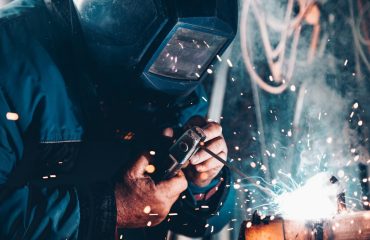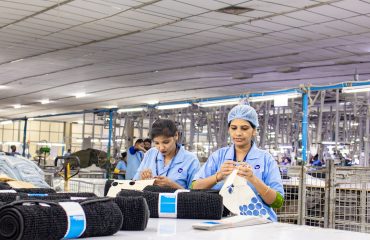Use of Steel in Agricultural Buildings: A Comprehensive Guide
Introduction
The agricultural sector is constantly evolving, demanding structures that are durable, efficient, and adaptable to changing needs. Steel has emerged as a leading material in agricultural building construction, offering a compelling combination of strength, versatility, and cost-effectiveness. This comprehensive guide explores the various applications of steel in agricultural buildings, examining its benefits, different types, design considerations, and future trends.
Benefits of Using Steel in Agricultural Buildings
Steel’s popularity in agricultural construction stems from numerous advantages:
- High Strength-to-Weight Ratio: Steel boasts exceptional strength relative to its weight, allowing for the construction of larger spans with minimal support structures. This translates to more usable space within the building.
- Durability and Longevity: Steel structures are highly resistant to rot, insect infestation, and fire, significantly extending their lifespan compared to traditional materials like wood. Properly treated steel can withstand harsh weather conditions for decades.
- Fast and Efficient Construction: Pre-fabricated steel components can be easily assembled on-site, accelerating the construction process and reducing labor costs. This is particularly advantageous for large-scale projects.
- Cost-Effectiveness: While initial material costs might be higher than some alternatives, the long-term savings from reduced maintenance, extended lifespan, and faster construction often make steel a more economical choice.
- Design Flexibility: Steel’s malleability allows for a wide range of design possibilities, accommodating various architectural styles and functional requirements. Curved roofs, large open spaces, and customized layouts are all achievable with steel.
- Sustainability: Steel is a highly recyclable material, contributing to environmentally friendly construction practices. Furthermore, the durability of steel structures reduces the need for frequent replacements, minimizing waste.
- Easy Expansion and Modification: Steel structures can be easily expanded or modified to accommodate future needs, offering flexibility for growing agricultural operations.
Types of Steel Used in Agricultural Buildings
Several types of steel are suitable for agricultural building construction, each offering specific properties:
- Hot-Rolled Steel: This is a common and cost-effective choice, offering good strength and durability. It’s often used for structural components like beams and columns.
- Cold-Formed Steel: This type of steel is formed at room temperature, allowing for intricate shapes and designs. It’s often used for cladding, roofing, and other non-structural elements.
- Galvanized Steel: A protective zinc coating enhances corrosion resistance, making it ideal for outdoor applications and extending the lifespan of the structure.
- Stainless Steel: Offers superior corrosion resistance and is particularly suitable for environments with high humidity or exposure to corrosive chemicals.
Design Considerations for Steel Agricultural Buildings
Designing a steel agricultural building requires careful consideration of several factors:
- Structural Engineering: Accurate load calculations are crucial to ensure the building’s stability and safety. This involves considering snow loads, wind loads, and the weight of stored materials.
- Climate Conditions: The building’s design must account for local climate conditions, including temperature extremes, precipitation, and wind speeds. Proper insulation and weatherproofing are essential.
- Intended Use: The specific purpose of the building (e.g., livestock housing, storage, greenhouse) will dictate its design features, including size, ventilation, and interior layout.
- Building Codes and Regulations: Adherence to local building codes and regulations is paramount to ensure the safety and legality of the structure.
- Foundation Design: A suitable foundation is crucial for supporting the steel structure and preventing settling or damage. The type of foundation will depend on the soil conditions and building size.
- Fire Protection: While steel is inherently fire-resistant, additional fire protection measures may be necessary depending on the building’s use and local regulations.
Future Trends in Steel Agricultural Buildings
The use of steel in agricultural buildings is constantly evolving, with several emerging trends shaping the future:
- Sustainable Steel Production: The industry is focusing on reducing the carbon footprint of steel production through innovative methods and renewable energy sources.
- Smart Building Technologies: Integration of smart sensors and automation systems to monitor environmental conditions, optimize energy consumption, and improve efficiency.
- Prefabricated and Modular Designs: Further advancements in prefabrication and modular construction are expected to accelerate construction times and reduce costs.
- Advanced Materials and Coatings: Development of new steel alloys and protective coatings to enhance durability, corrosion resistance, and longevity.
- Increased Use of High-Strength Steel: High-strength steel allows for lighter and more efficient structures, further reducing material costs and environmental impact.
Conclusion
Steel’s versatility, strength, and cost-effectiveness make it a compelling choice for modern agricultural buildings. By carefully considering design factors, selecting appropriate steel types, and staying abreast of industry trends, farmers and agricultural businesses can leverage the benefits of steel to create durable, efficient, and sustainable structures that support their operations for years to come.
“`




